Using Epsom salt as a soil amendment can significantly boost plant growth, an idea backed up by anecdotal evidence and scientific studies. Epsom salt is also called magnesium sulfate, which contains important nutrients particularly magnesium and sulfur which are vital in various physiological processes within the plants. Chlorophyll, required for photosynthesis, contains magnesium. Moreover, sulfur is essential for amino acid synthesis as well as vitamin and enzyme formation. With Epsom salt included in gardening practices, you can promote healthier, stronger plants, hence increasing the harvests. This article looks at how Epsom salts help with plant growth scientifically, best ways to apply it and practical advice to make it useful in different garden environments.
Benefits of Adding Epsom Salt to Plants
There are many reasons why epsom salt is good for plant growth because of its magnesium and sulfur. Magnesium is essential in producing chlorophyll and photosynthesis to ensure efficient energy trapping from sunlight. Moreover, this element improves the formation rate of other essential amino acids and vitamins that accelerate plant metabolism. Epsom salts can as well improve the uptake of nutrients thereby making other fertilizers more effective. Correct application can enhance plant health due to increased leafiness, more robust plants, and better yield.
Increase Nutrient Absorption
Epsom salt when applied on the soil dissolves into the ground releasing magnesia ions which quickly get absorbed by root crops. This brings about an increase in nitrogen, phosphorous and potassium absorption by a plant since magnesium acts as a catalyst for such enzymatic reactions Enhancing its ability to uptake nutrients from soils.. In addition, affecting magnesium levels can affect cell walls’ strength besides regulating water transportation through xylem or phloem systems within a plant body. Based on empirical research, the optimum concentration for Epsom salt for most plants is approximately one tablespoon per gallon of water spray on leaves. Once delivered via foliar nutrition system, it enters rapidly into cells where it supports synthesis of chlorophyll molecules involved in photosynthesis with subsequent transfer and use of energy stored in them by plants. Using over 1 cup Epsom salt per 100 square feet of top soil before planting will spread out these minerals evenly throughout roots zone thus preventing any deficiencies. These best practices which are founded on understanding how plants work biologically relative to soil chemistry support epsom salts’ effectiveness at increasing nutrient absorption thereby promoting healthier productivity among plants.
Enhance Chlorophyll Production
For instance, chlorophyll production heavily depends on magnesium availability since this element forms part of a molecule that makes up chlorophylls.Mg deficiency could be addressed directly by including Epsom salt in a plant care routine to help synthesize more chlorophyll. Thus, it not only makes the plant greener but it is also crucial for increasing the quality of energy conversion as this increases the amount of light transformed into chemical food materials. This results in plants growing faster and having stronger resistance against stress conditions. It has been found that continuous use of Epsom salts leads to a measurable increase in chlorophyll content which indicates its role in promoting general plant well-being.
Increase Plant Growth and Health
Epsom salt also plays a vital role in enhancing nutrient uptake and ensuring healthy root development, leading to overall plant development. In general, these enzymes are magnesium dependent molecules that are essential for photosynthesis and respiration which drive energy production and growth respectively.Understanding that sulphur is present in these salts helps explain why pyruvate can be converted into acetyl-CoA when ATP is hydrolysed during protein synthesis.. With frequent application of epsom salt, sufficient levels of magnesium are available for robust growth, resistance from diseases, and higher yields. Furthermore, magnesium sulfate functions as an important tool for alleviating shock due to replanting process hence enabling adaptability of young flora towards their newly established environments rapidly.
Determining the Right Amount of Epsom Salt for Plants
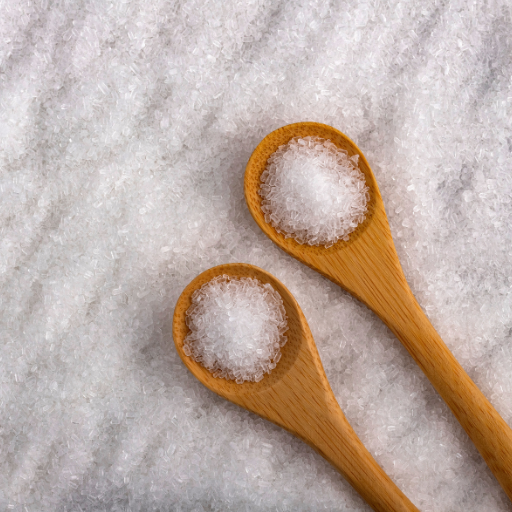
When determining the appropriate amount of Epsom salt for plants, it is crucial to consider the specific needs of the plant species, soil conditions, and overall growth objectives. For general use, a common recommendation involves dissolving one tablespoon of Epsom salt in a gallon of water and applying it to the soil around the plant once per month. A more diluted solution comprising two tablespoons of Epsom salt per gallon of water every six weeks is recommended for houseplants. In vegetable gardens, particularly for tomatoes and peppers, using foliar sprays with one teaspoon Epsom salt per quart of water can help prevent magnesium deficiency and foster sound development. Plant response must be monitored; otherwise, over-fertilization can result.
Recommended Dosages for Indoor Plants
The best dosage of Epsom salt for indoor plants usually requires dissolving two tablespoons in a gallon of water and using this solution to irrigate them after four to six weeks. This way, they get enough magnesium and sulfur to maintain their optimum health status since they were grown indoors. Do not forget that too much watering may lead to root problems; hence, apply the solution directly to the soil without spilling excess water on the leaves. It is also imperative to monitor any symptoms indicating underuse or overuse in order to make changes when necessary.
Proper Quantities for Outdoor Garden Plants
For outdoor garden plants, the appropriate quantity of Epsom salt depends on the type of plant and soil conditions. Generally speaking, incorporating one tablespoonful into a gallon’s worth of liquid which you then use as a soil drenching method each month will suffice. Foliar spray can be made by dissolving 1 tablespoonful Epson salts in a gallon full of water and applying it biweekly during the crop season especially when growing vegetables like tomatoes or pepper (Soluble Salt Management). Sprinkle around rose bushes monthly during growing season with dry Epsom salts at one tbsp per rosebush (Chisholm). Always be attentive to plant response and environmental conditions to fine-tune the application for the best results.
Specific Measurements for Flowering Plants
Flowering plants often have specific nutritional needs that can be met with the right dosage of Epsom salt. For most flowering plants, especially those in bloom stage, it is usually advised to dissolve one tablespoonful of Epsom salts in a gallon of water and apply it once every two to four weeks. Apply two teaspoons of Epsom salts dissolved in a gallon of water during container-grown flowering plants such as roses twice every week (Weil). On poor soils, side dress with dry Epsom salts at 1 tbsp per foot of plant height applied monthly can correct magnesium deficiency and enhance flower production (Torkelson ; Baker ). Regular observation and adjustments based on plant health and flowering outcomes are essential to achieving optimal results.
Methods of Adding Epsom Salt to Plants
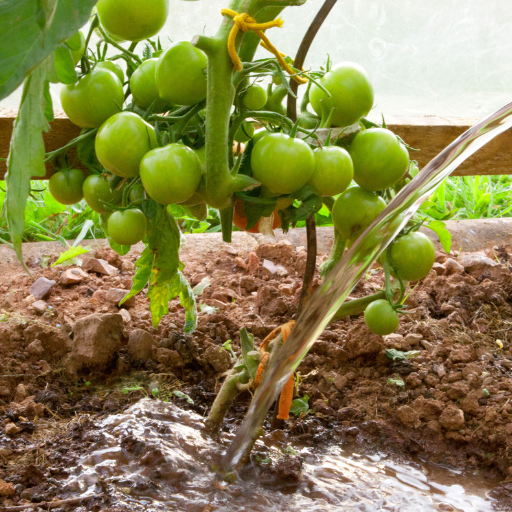
Various methods exist for adding Epsom salt to plants to ensure that their nutrient uptake and health are optimized. Foliar spray method dissolves Epsom salt in water and spray it directly on the leaves. It facilitates quick absorption and is very useful during growing seasons. Another method can be through soil drenching which involves dissolving epsom salt in water and applying it around the base of plants on soil. This will help deliver magnesium and sulfur content to the root zone. Dry application, however, involves spreading epsom salt on the planting surface or mixing it with soil prior to planting thus making this method as direct as possible. This applies when establishing a magnesium rich environment right from plant growth onset. Therefore, timely monitoring of plant response as well as soil conditions will enable fine tuning of such applications thereby guaranteeing best results.
Foliar Spray Techniques
To rapidly absorb nutrients into the plant leaves using foliar spray techniques, a solution can be created by dissolving Epsom salt into water and then directly applied onto them. The appropriate concentration for foliar spray should ideally be equivalent to one tablespoon of Epsom salts per every gallon of water usually used for dilution purposes. This level presents an adequate amount of vital magnesium and sulfur whose stomata may facilitate quick absorption through.
Prepare the solution in a sprayer bottle. Early mornings or late evenings are better for applying since there is less evaporation possible when it’s not hot. Ensure that you are able to get fine droplets evenly distributed across both surfaces, i.e., upper and lower leaf surfaces, without concentration in any one area. Do not spray at midday when it’s hottest, so burning will not occur but rather an increased rate of intake.
Following foliar application, observe plants closely for signs of improvement or any adverse reactions. Repeated application every two to four weeks may be essential to sustain sufficient nutrient availability, especially during periods characterized by rapid growth or blossoming cycles. If such results are observed, the frequency and concentration might need to be modified on an individual basis depending on the plants’ requirements.
Soil Drench Applications
Soil drenching can introduce magnesium and sulfur directly into plant roots. One to two tablespoons of Epsom salt are dissolved in a gallon of water to create an Epsom salt solution that’s then applied over the soil. Soil drenching is the best way to improve soil nutrient levels over months and enhance root development and overall plant vigor.
To begin with, ensure that the soils are well moistened for better absorption. Apply the Epsom salt solution uniformly around the base of the plant, covering the root zone but not pouring it directly on the stem or foliage. Early morning or late afternoon is ideal, as cooler parts help fast absorption and prevent quick evaporation. Therefore, it is advisable to carry out this at this time.
Further advancement in the application of soil pH and nutrients may be achieved through regular monitoring. Most plants do well with a pH of 6.0 to 7.5, ideal for nutrient uptake, hence soil tests can indicate whether additional amendments are necessary. The soil drench should be reapplied every four to six weeks or as per the performance and growth stages of the plant as needed. The concentrations may need adjustment depending on both the specific needs of different species and original levels of soil nutrients, for maintenance of a balanced supply without danger of over-fertilization.
Mixing Epsom Salt Directly into Soil
Mixing Epsom salt directly into soil is another effective supplementing magnesium and sulphur. This will ensure that it is properly blended by incorporating it uniformly into the top 6 to 8 inches before planting or around existing plants. On average, about one tablespoonful per square foot of soil is recommended in order to improve general levels of magnesium in the ground.
This method enhances the nutrient profile in the soil and encourages healthy root systems. Particularly during growing seasons, spread evenly around base; lightly work it into soil surface for absorption by established plants with Epsom salt; care should be taken not put large quantities directly near stem so as to avoid damage caused by such materials. Periodic conductance of soils testing will help in adjusting frequency and quantities used thereby ensuring optimum nutrient balance for application use varying according to plant type and prevailing conditions within fields.
Timing and Frequency of Epsom Salt Applications
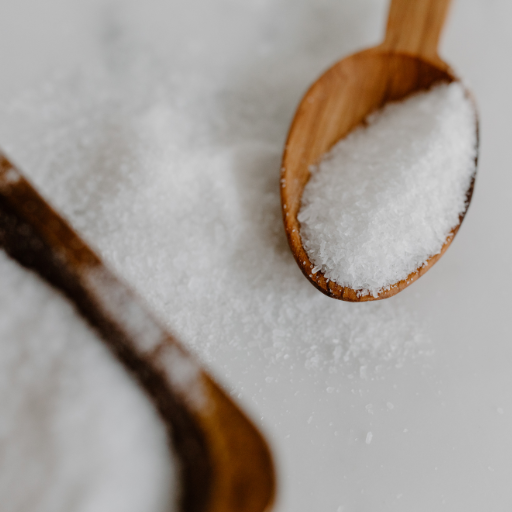
The plant type and growth stage determine the best time and frequency to apply Epsom salt. For most garden plants, Epsom salt can be used every month or so during the growing season to help with magnesium deficiencies. This may involve putting a tablespoon of Epsom salt in the soil at planting time for vegetables such as tomatoes and peppers, and then as a side dressing when the fruit starts setting up and regular monthly fertilizer applications. When it comes to flowering plants and shrubs, applying Epsom salt once per year in early spring is advised, followed by 4-6 weeks intervals between each application thereafter. It will be of great benefit to turf grass if applied in spring again mid-summer. Always adjust the concentration based on soil test results and specific plant needs to prevent over-fertilization.
Optimal Seasons for Application
The best time to use Epson salts are usually during spring or summer which coincide with active plant growth periods. These require extra supplies of magnesium and sulphur because they are very important for key physiological functions that are taking place. In the initial stages of this season, a substantial root stimulation is achieved as it begins; thus there is also enough nutrition required while plants get out of hibernation. Mid-summer applications sustain healthy plants productivity especially in peak reproductive cycles for fruited plants.
For specific technical parameters, soil magnesium levels should ideally range from 1.0 to 3.0 g/kg (grams per kilogram) and sulfur levels from 100 to 500 mg/kg (milligrams per kilogram). With these ranges in mind, nutrient availability is improved thus overall yields are increased through higher uptake rates by crops. Prior to using Epson salt, do some soil tests first so that you only apply what is necessary without causing excessive fertilizer usage that might not be helpful at all . Always adhere to these guidelines because it supports agronomic practices including region-specific recommendations, and real-time soil nutrient analysis that guides application rates.
Frequency Based on Plant Species
Epsom salt usage frequency varies depending on the plant species and their nutritional needs. Monthly applications of magnesium for instance, are recommended for tomatoes and peppers during their growth period since they require a constant supply of these nutrients to ensure the development of high quality fruits. Blooming roses typically need Epsom salts every 4-6 weeks while houseplants, potted plants can be managed with an application gap of not less than two to three months in order to avoid nutrient build up within the containerized root zone. To achieve best outcomes always determine the frequency based on plant’s individual needs, soil conditions, and results from soil nutrient testing.
Identifying When to Reapply Epsom Salt
Determining when to reapply Epson salts is important in maintaining optimal plant health and avoiding nutrient imbalances. Visual symptoms like interveinal chlorosis (yellow leaves with green veins) and stunted growth are some of the main indications of lack of magnesium which may call for its reappearance in a system. There is also need for continuous monitoring by means of regular soil or tissue tests conducted on magnesium levels. Should soils contain less than 20 parts per million (ppm) or foliar tests show that magnesium content is below 0.2%, it would generally be recommended that Epsom salts as a treatment must be applied again to correct such deficiency.
In addition to that, think about the plant’s growth level and changes with seasons. During peak growing periods, higher nutrient supplementation is necessary to sustain rapid growth as well as reproductive development. Observe the response of plants and soil test results then adjust application rates accordingly. To calibrate Epsom salt frequency and amount for each application using real time data alongside accepted norms of practice is an optimal way to achieve nutrient management effectiveness in agriculture while being sustainable.
Preparing Epsom Salt Solutions for Different Plants
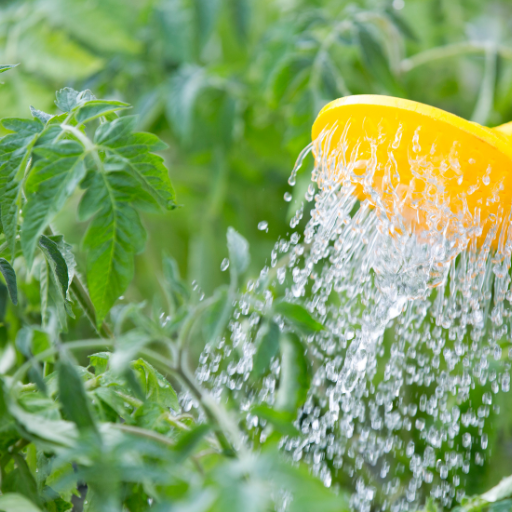
Preparation of Epsom salt solutions for various plants should involve adjusting concentration to suit the species’ peculiarities. The commonly recommended ratio for general garden use is 1 tablespoon of Epsom salt in each gallon of water. When considering houseplants, however, a weaker solution like 1 teaspoon per gallon of water may suffice most times. On the other hand, tomatoes and peppers are heavy feeders that need higher concentrations such as approximately 2 tablespoons per gallon of water, which should be applied every two weeks throughout the growing season. Roses too flourish with the addition of Epsom salt; for them, monthly application of one tablespoon in one galloon of water will foster vigorous growth and flower production. To ensure uniform distribution and best absorption possible apply directly to the soil around bases or foliar spray.
Always carry out a soil test before applications so as to determine exact nutrient requirements and avoid over-fertilization which would harm plant life.
Designing Effective Foliar Sprays
Foliar sprays can be very effective methods because they deliver nutrients right onto leaves where they are taken up fast by plants resulting into immediate outcomes. A good start can be made by putting 1 tablespoon of Epsom salt into 1 gallon of fresh water in order to manufacture efficient foliar sprays using Epsom salts. This level is generally sufficient for all plants to result in dark green foliage and healthy development. Further, a small amount of soap may also be incorporated in order to facilitate adherence on leaves.
To avoid midday leaf burn it is better to apply the foliar spray either early in morning or late at night if possible. For best results, it is important that both sides (upper and lower) of leaves are covered thereby enhancing maximum nutrient uptake by plant parts. It could also help if you used a fine mist sprayer instead so that spraying becomes even throughout all surfaces on the plant body. You can spray again every fortnight while observing how your plants respond and adjusting concentration according to observed plant health and vigor.
Formulating Soil Drench Solutions
Quantities that will be adequate should be started with, e.g., 1 tablespoon of Epsom salt in a gallon of water. This mixture is especially good for plants that manifest symptoms of magnesium deficiency like yellowing leaves or stunted growth. When preparing the solution it is important to dissolve all the Epsom salt before pouring on it to ensure that it can be absorbed best through roots.
The solution can then be used by watering thoroughly around the base of plants until the root zone is saturated. This direct approach facilitates nutrient uptakes, which quickly results in immediate benefits to plants. Use about half a gallon per square foot for garden beds, plus adjust accordingly for potted plants based on container size.
Keep close check on your crops after few weeks for any signs of improvement. Incase need arises, soil drench solution will require reapplication every four to six weeks depending on how well each species responds and grows respectively. It is important therefore, prior to each application conduct a soil test to identify specific nutrient needs and avoid over-fertilization, which may damage plant health. For a more specific approach, such as dealing with very delicate or weak specimens you may want to consider consulting from some of the top online horticultural resources or even local agricultural extension service whereby personalized advice will be given.
Combining Other Nutrients with Epsom Salt
When these nutrients are combined, Epsom salt can be more effective by simultaneously addressing numerous nutrient deficiencies. So, when you integrate Epsom salt into your fertilization program consider it in conjunction with a balanced all-purpose fertilizer that supplies NPK nutrients (nitrogen, phosphorus and potassium). Usually, what is done is combining 10-10-10 or 20-20-20 NPK with Epsom salts as stated by the manufacturer on the fertilizer box and adding one tablespoon of Epsom salt for every gallon of water that will be used.
Including calcium for tomatoes and peppers is essential to prevent blossom end rot and improve fruit quality. For one gallon of water, mix one tablespoon each of Epsom salt and calcium nitrate. Make sure that the solution is appropriately diluted to avoid leaf burn during foliar applications mostly done using a teaspoonful per gallon of water for each substance.
A chelated micronutrient blend combined with Epsom salt can benefit plants needing trace elements like iron, manganese, or zinc. Follow the mixing rates provided by the manufacturer; typically, this includes adding the chelated micronutrient solution to your Epsom salt drench and making sure it is properly mixed.
Monitoring and Adjusting Epsom Salt Use
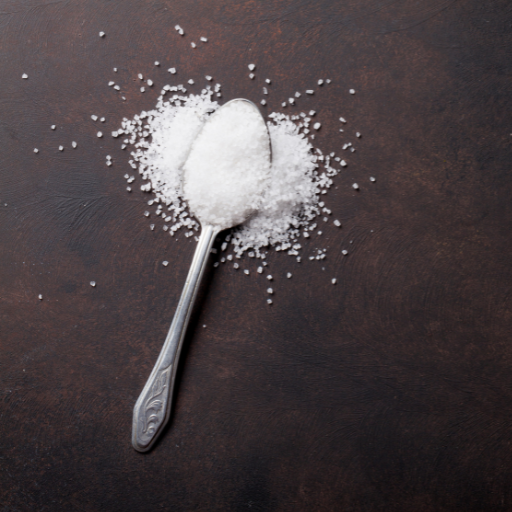
Plant health must be monitored regularly to use Epsom salt as part of your fertilization routine. Initially, you should start by examining signs of magnesium deficiency such as yellow leaves or slow growth then change the application accordingly. It’s also important to carry out soil testing for accuracy on magnesium levels to help refine the dosage and frequency. Do not over-apply Epsom salt because excessive magnesium could interfere with uptake of other essential nutrients including calcium and potassium. With periodic soil tests and visual inspections, appropriate adjustments can be made so that your plants get optimum nutrition without nutrient imbalances.
Observation of Plant Health and Growth
It is important to observe several indicators used to evaluate plant health and growth effectively. First, monitor leaf color and texture since healthy plants lose their vibrant green color with pleasurable texture on them. Yellowing leaves or wilting may indicate lack of nutrients or incorrect watering practices. Second, consider how plants are growing; consistent rapid growth is often a sign of well-nourished plant while slowed down pace may point out need for care adjustments. For detailed analysis, a periodic checking of soil pH and nutrient levels may be done which should include:
- Soil PH: Between 6.0-7.0 is an optimum range for most plants hence accurate measurements can be gotten from testing kits or sensors that measure soil acidity.
- Magnesium concentration: In general, at least 15-25 ppm is needed for thriving, healthy plants; thus, it should remain within this range through these tests.
- Micronutrients amount: The presence of iron (Fe) should range between 4.5ppm and 7.5ppm, manganese (Mn) between 4ppm and 5ppm, and zinc (Zn) between 1.5ppm and 3ppm.
You can significantly promote robust plant health and growth by ensuring these technical parameters are maintained, along with regular visual inspections and appropriate adjustments to care routines.
Signs of Magnesium Deficiency
Several distinct symptoms are characteristic of magnesium deficiency in plants and can, therefore, be identified and addressed before causing significant damage. The first one is interveinal chlorosis, where the areas between veins become yellow while the veins keep their green color. This usually starts on old leaves. Eventually, affected leaves may develop brown or purplish spots, become necrotic, and drop prematurely as the deficiency progresses.
Technically, magnesium forms part of the chlorophyll molecule, without which a plant cannot photosynthesize, leading to stunted overall growth and reduced yield. Thus, as noted earlier by doing soil tests, the ideal range for maintaining these levels would be 15-25 parts per million (ppm). These include applying Epsom salts or dolomitic limestone to replenish magnesium levels adequately.
Implementing these treatments based on soil test results and carefully observing plant responses can correct deficiency symptoms, promoting lively, healthy growth. Periodic monitoring ensures sustained nutrient balance, preventing the recurrence of deficiency.
Modifying dosages according to how plants respond
The key to adjusting dosages based on plant responses is carefully monitoring how plants react to the applied nutrients and making necessary modifications accordingly. Start this process by looking at the whole plant’s general condition, checking if leaf colors have changed or growth patterns altered together with general vigor. If there is no improvement in symptoms associated with a lack of enough magnesium, increase dosage gradually starting from a minimal amount recommended above your head
Magnesium sulfate is usually used at a speed of one teaspoon per gallon for leaf sprays, or 1 tablespoon per gallon for soil drenches (watering). Over-application needs to be avoided because it can cause an imbalance of nutrients and possible toxicity. This is so that the corrections made do not remain either excessive or inadequate.
To refine the adjustments more, regular soil testing should be done to ascertain magnesium levels that will help in determining frequency and concentration of applications. Additionally, other essential nutrients such as calcium and potassium should be balanced when supplementing with magnesium.
Following this guide, relying on soil and tissue tests, as well as plant responses, allows you to fine-tune your nutrient dosages, which will enhance continuous vigorous growth.
Frequently Asked Questions (FAQs)
Q: How does Epsom salt enhance plant growth?
A: Epsom salt enhances plant growth by providing essential nutrients like magnesium and sulfur. These nutrients help plants grow bushier, produce more flowers, and improve overall health.
Q: Can I use Epsom salt on all types of plants?
A: While Epsom salt is generally beneficial for most plants, not all plants need it. Plants don’t like Epsom salt if your soil already contains sufficient magnesium. It’s best to conduct a soil test before applying it.
Q: How much Epsom salt should I apply to my garden?
A: The amount of Epsom salt to use depends on the type of plant. For general gardening, adding one tablespoon per gallon of water is a good rule of thumb. However, tomato plants and pepper plants may require different doses.
Q: Is Epsom salt good for tomato plants?
A: Yes, Epsom salt can help tomato plants by preventing blossom end rot, improving flowering, and increasing fruit production. However, you should ensure that your soil is deficient in magnesium before applying it.
Q: How often should I apply Epsom salt to my plants?
A: Epsom salt can be applied every two to four weeks during the growing season. Over-application can harm your plants, so it’s crucial to stick to recommended dosages.
Q: Can Epsom salt be used to adjust soil pH?
A: Epsom salt does not significantly alter soil pH. If you have acidic soil or need to change soil pH, you should look into other amendments. Epsom salt is primarily used for its magnesium and sulfur content.
Q: Can Epsom salt prevent blossom end rot in tomatoes?
A: Epsom salt can help prevent blossom end rot in tomatoes by providing a readily available source of magnesium. However, it does not address calcium deficiency, which is a common cause of blossom end rot. Ensure your soil also has sufficient calcium.
Q: Is it safe to use Epsom salt in the garden long-term?
A: Yes, Epsom salt is safe for long-term use in the garden. However, unless your soil is deficient in magnesium, continual application may lead to nutrient imbalances over time.
Q: Does Epsom salt help with pest control in the garden?
A: While Epsom salt is not a pesticide, it can help plants become healthier and more resilient to pest attacks. A healthy plant is less likely to suffer from pest infestations.






